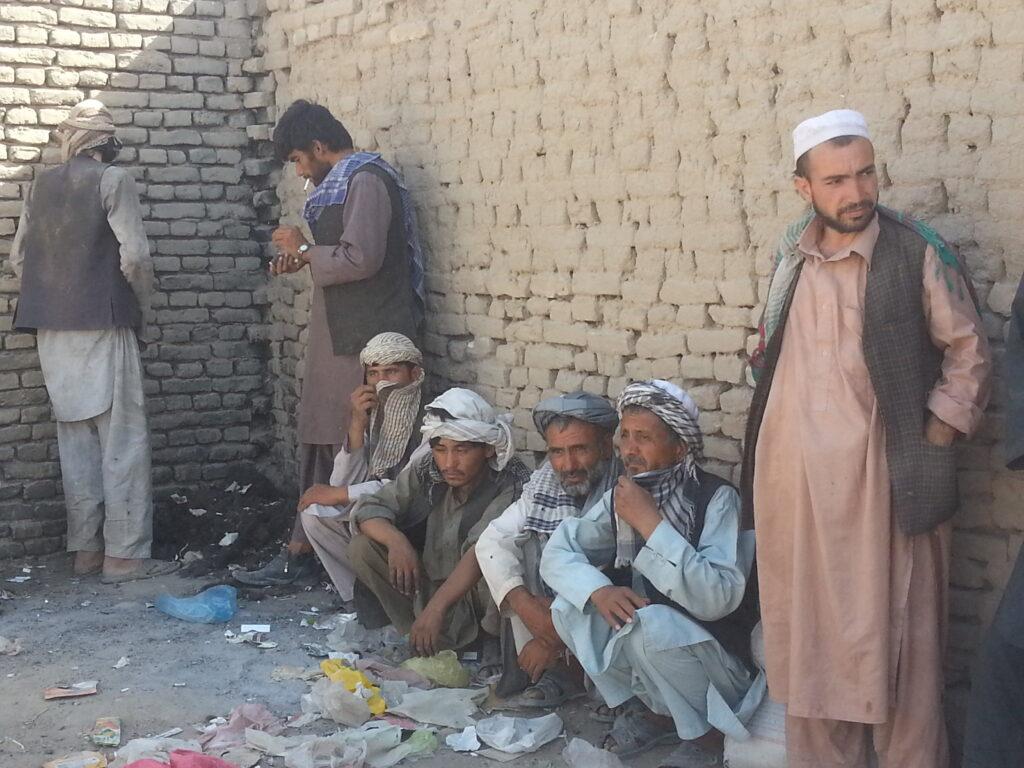ZARANJ (Pajhwok): The number of drug addicted people has reached 10,000 in southwestern Nimroz province and most of these individuals have returned from Iran after going there for work, an official said on Sunday.
Dr. Syed Khalil Kazemi, in charge of the drug-addicts clinics at the Public Health Department, said although a proper survey to know the exact number of drug addicts has not been conducted, but probably their population was around 10,000 individuals.
He added 60 to 70 percent of the addicts were those who had gone to foreign countries for work and returned back. Six-hundred women were part of the total drug addicts, he added.
Kazemi cited pressure to find work, psychological issues and easy access to drugs as main reasons why these people turned to the habit in foreign countries.
He said currently two rehabilitation facilities for drug addicts were functional in Zaranj, the provincial capital and one of the centres was for women where 21 drug addicted women were being treated.
At the men’s centre 51 drug addicted men are under treatment. “Every patient is discharged after 45-day of treatment”, he added.
Kazemi said up to now 3,000 drug addicted women and 8,000 addicted men had been discharged and handed over to their families after treatment.
In addition, Haji Nazir, a local businessman, has set up a facility for rehabilitation of drug addicts at his own expenses in Zaranj. So far up to 500 drug addicts have been treated at the facility.
Haji Nazir told Pajhwok Afghan News he established the rehabilitation facility to protect the youth who were the asset of the country. He said the youth should be looked after at any cost.
Majid, one of the drug addicts, who has a family of wife and four children, said he went to Iran for work where he addicted to drug.
Hailing from Farah province, Majid said: “We did hard work there. My colleagues were addicted to drugs and I also got the habit in their company and it has been eight years since I have been using drug.”
Zahra, one of the drug addicted women, said she had easy access to drugs which she bought from small shops in the streets and bazaars.
Shema Mohammadi, an official of the Women’s Affairs Department, blamed women’s addiction to drugs on poverty, unemployment, migration and drug-addicted husbands.
Rounding up drug addicts:
Mohammad Ali Ghamai, acting head of Counter-Narcotic Department, said around 4,000 addicts lived in various parts of the province and rounding them up and keeping them at one particular place was a difficult work and needed specific budget.
Police spokesman Mohammad Umar said police often rounded up drug addicts from the city and handed them over to the rehabilitation centres and Haji Nazir’s rehabilitation facility.
But according to doctors, occasionally using force to transfer the addicts to rehabilitation centers was not a solution to the issue.
They demanded a proper strategy to overcome the growing addiction and methods how to rehabilitate addicts.
Deputy police chief Col Mohammad Saleh said cultivation of poppy and sale of drugs was banned in Nimroz and those involved would be dealt with in accordance with the law.
He said a large number of people had been arrested over drug smuggling, buying or selling. He did not give exact figures for the detainees.
nh/ma
Visits: 26









GET IN TOUCH
NEWSLETTER
SUGGEST A STORY
PAJHWOK MOBILE APP